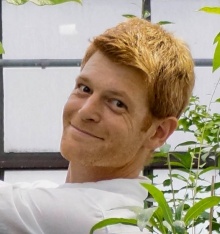Coevolution of plant reproduction and defence

Stuart Campbell
Université de Toronto, Canada, sa.campbell@utoronto.ca
(Talk in English)
Angiosperms exhibit a remarkable diversity of traits involved in sexual reproduction (e.g., flower scent and colour) and traits involved in defence against herbivores and other parasites (e.g., leaf chemistry, spines). Defence evolution and plant reproduction have existed as separate fields of study for over 100 years, and are considered exemplary cases of the powerful role of species interactions in driving adaptive evolution. In my research, I seek to unite these two disciplines in order to better understand the complex ecological selection pressures underlying angiosperm diversity. In this talk I will describe how repeated transitions from outcrossing to self-fertilization have shaped the convergent evolution of plant defence strategies and floral scent expression, and how mating systems have driven the maintenance of leaf chemical diversity. I will then discuss ongoing projects aimed at understanding microevolutionary mechanisms that link reproduction and defence. These studies, including laboratory analyses and field studies in wild populations, are testing how herbivores could impose natural selection on floral scent and costs of self-fertilization, and how ongoing, recent shifts in reproduction are shaping genomic and phenotypic evolution.
Recent publications:
Campbell, S.A. (2015). Ecological mechanisms for the coevolution of plant mating and defence strategies. New Phytologist 205: 1047-1053.
Campbell, S.A. and A. Kessler. (2013) Plant mating system transitions drive the macroevolution of defence strategies. Proceedings of the National Academy of Sciences U.S.A. (PNAS) 110(10): 3973-3978
Campbell, S.A., J.S. Thaler and A. Kessler. (2013) Plant chemistry underlies herbivore-mediated inbreeding depression in nature. Ecology Letters 16(2): 252-260
Contact: Nicolas Rode; nicolas.rode@supagro.inra.fr
Contact du Comité SEEM: seem@services.cnrs.fr. Contact du Labex CEMEB: gestion.cemeb@univ-montp2.fr, www.labex-cemeb.org.


